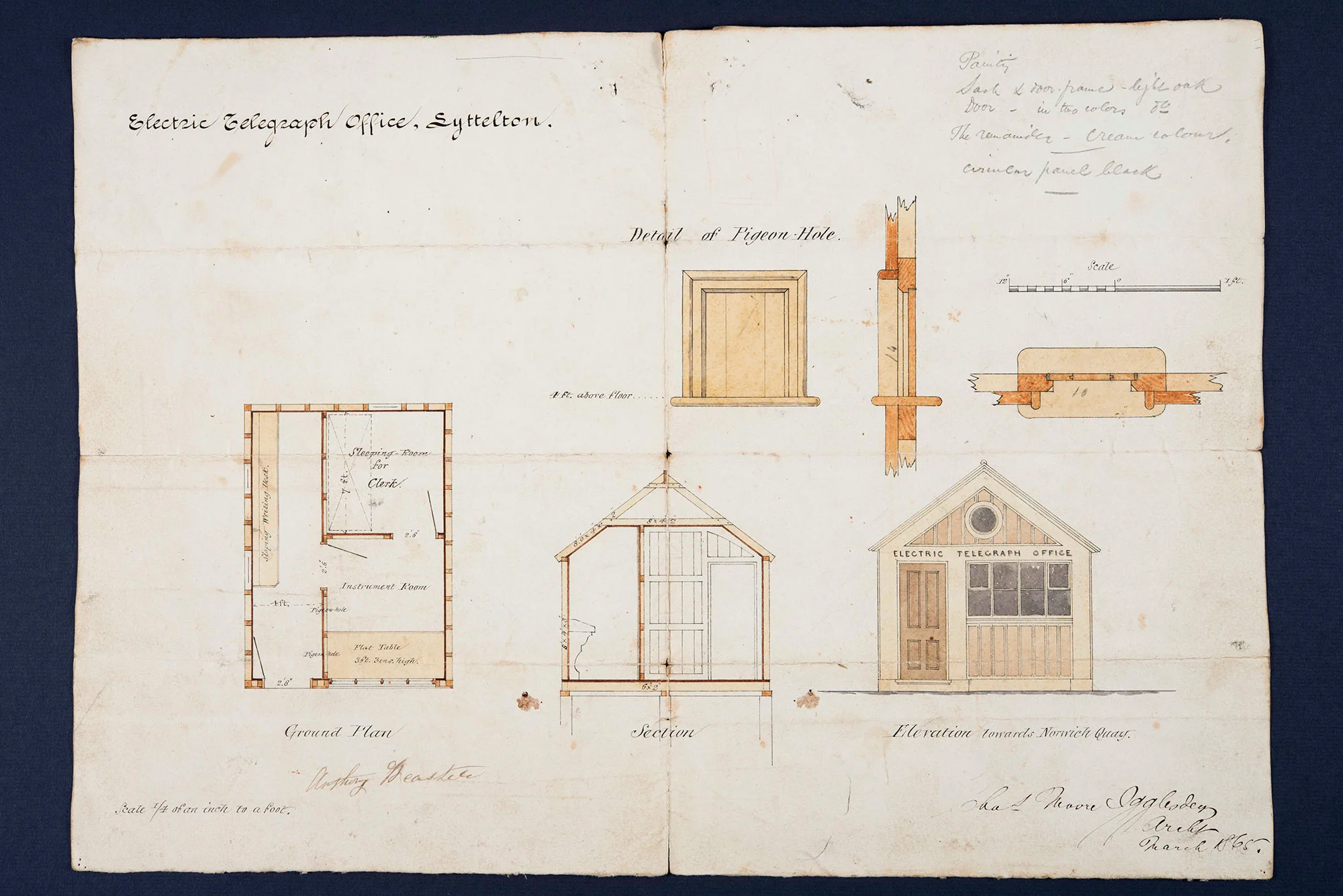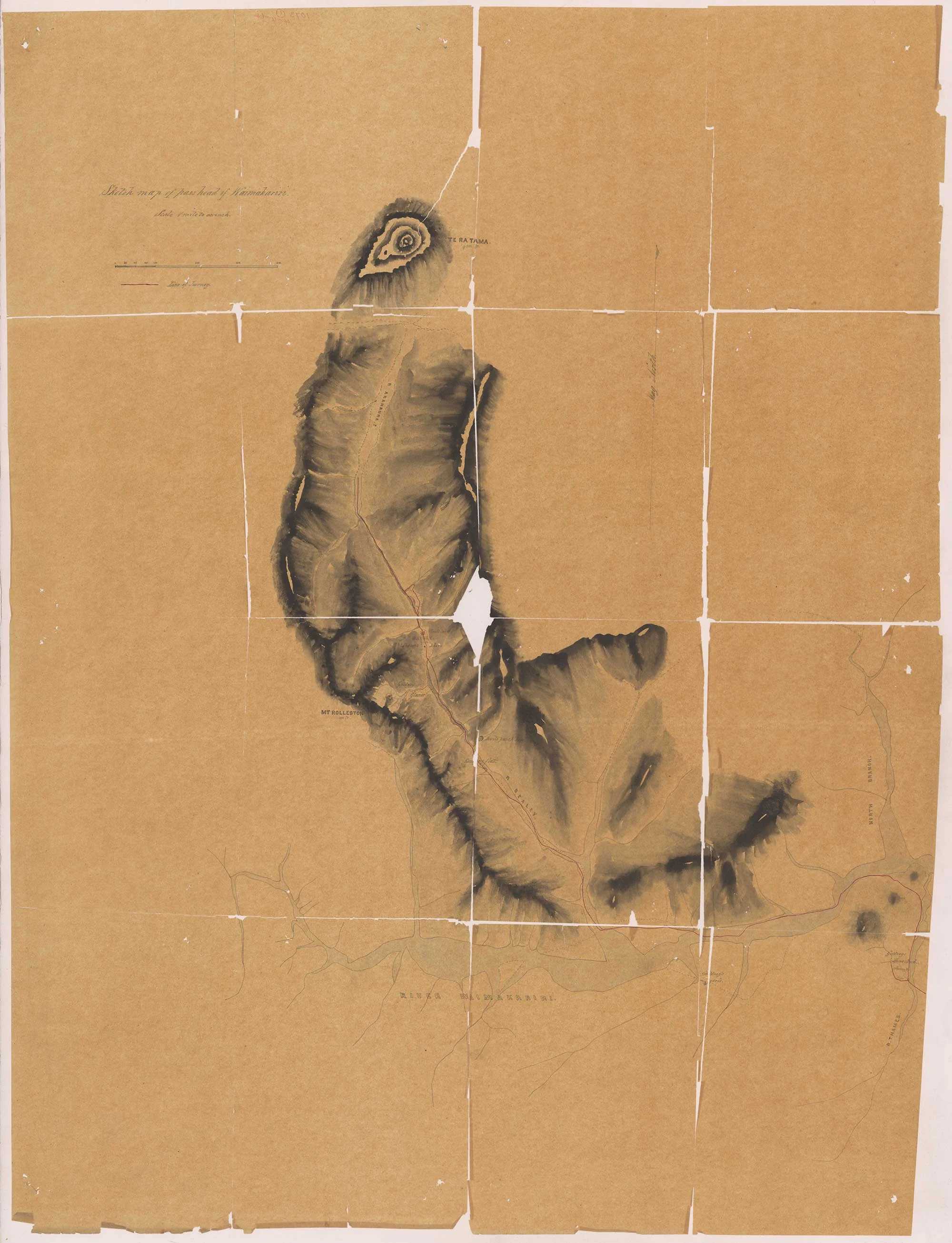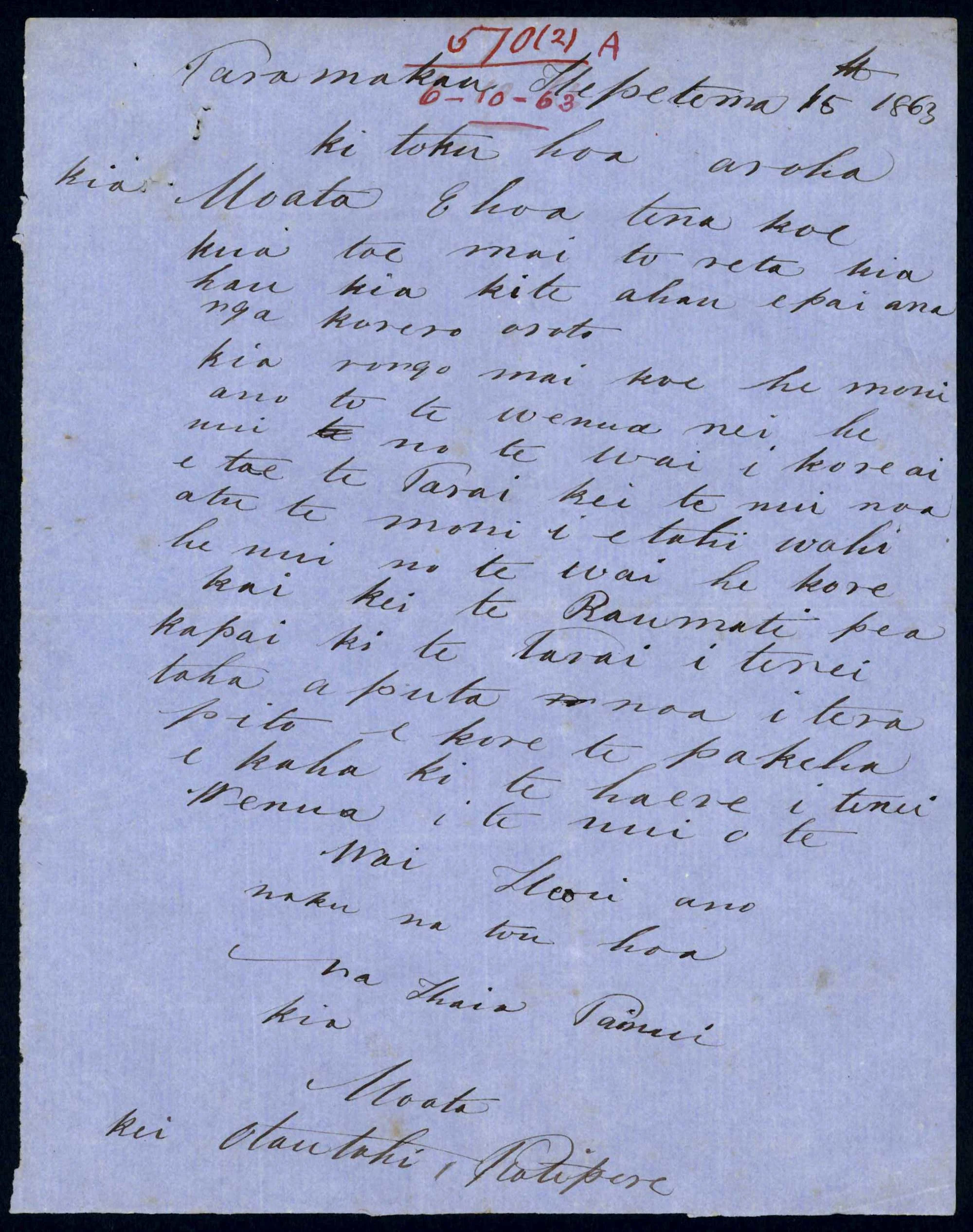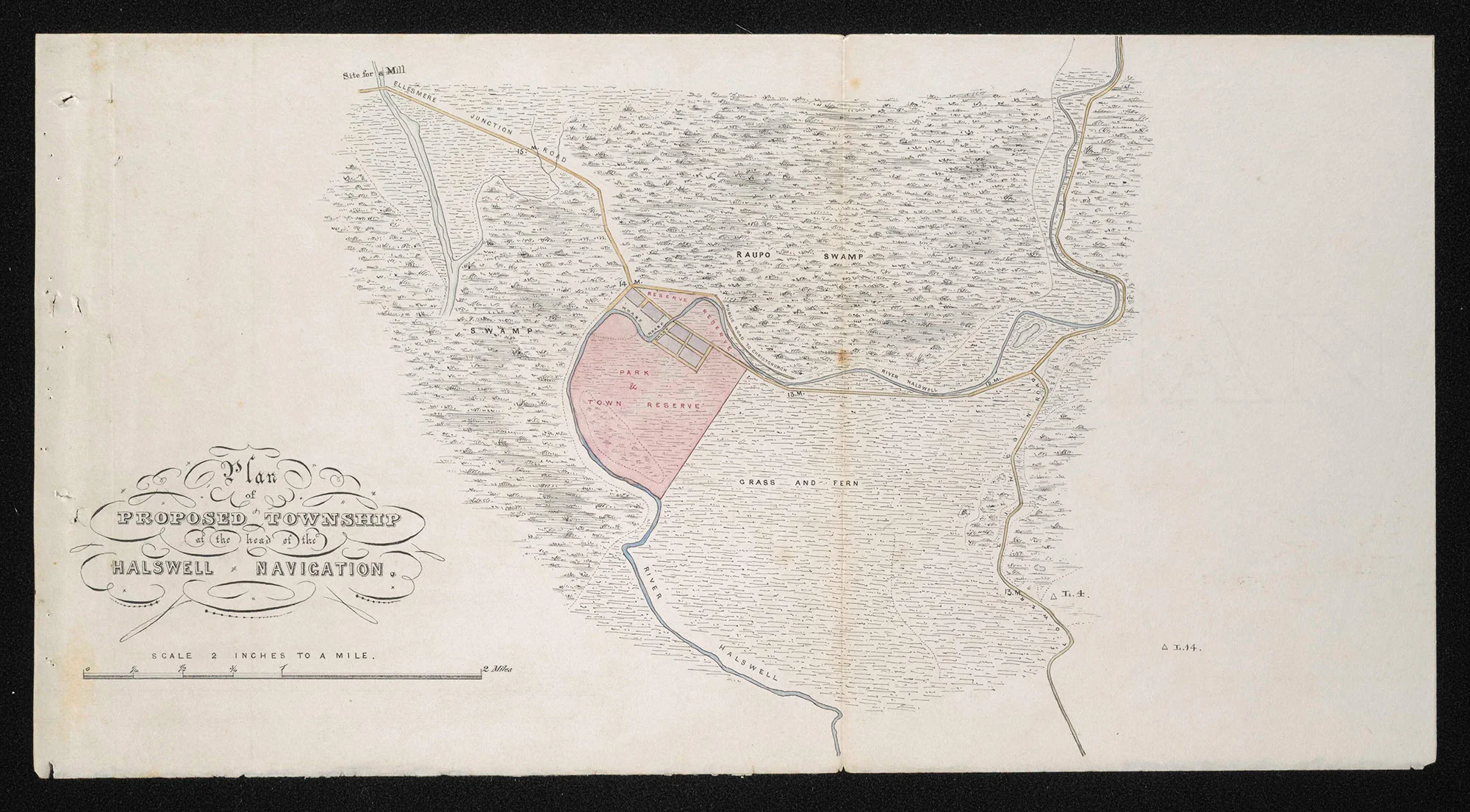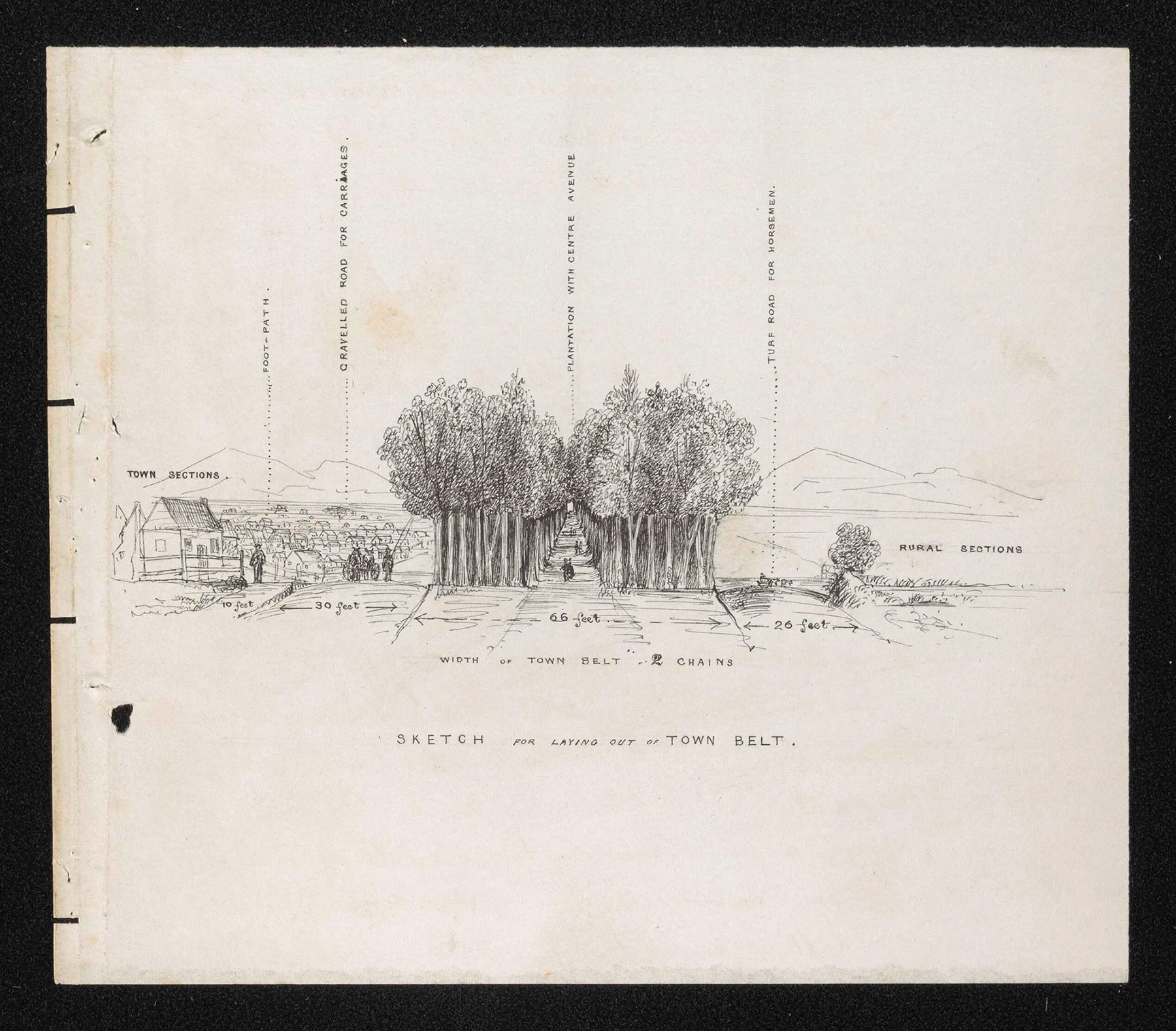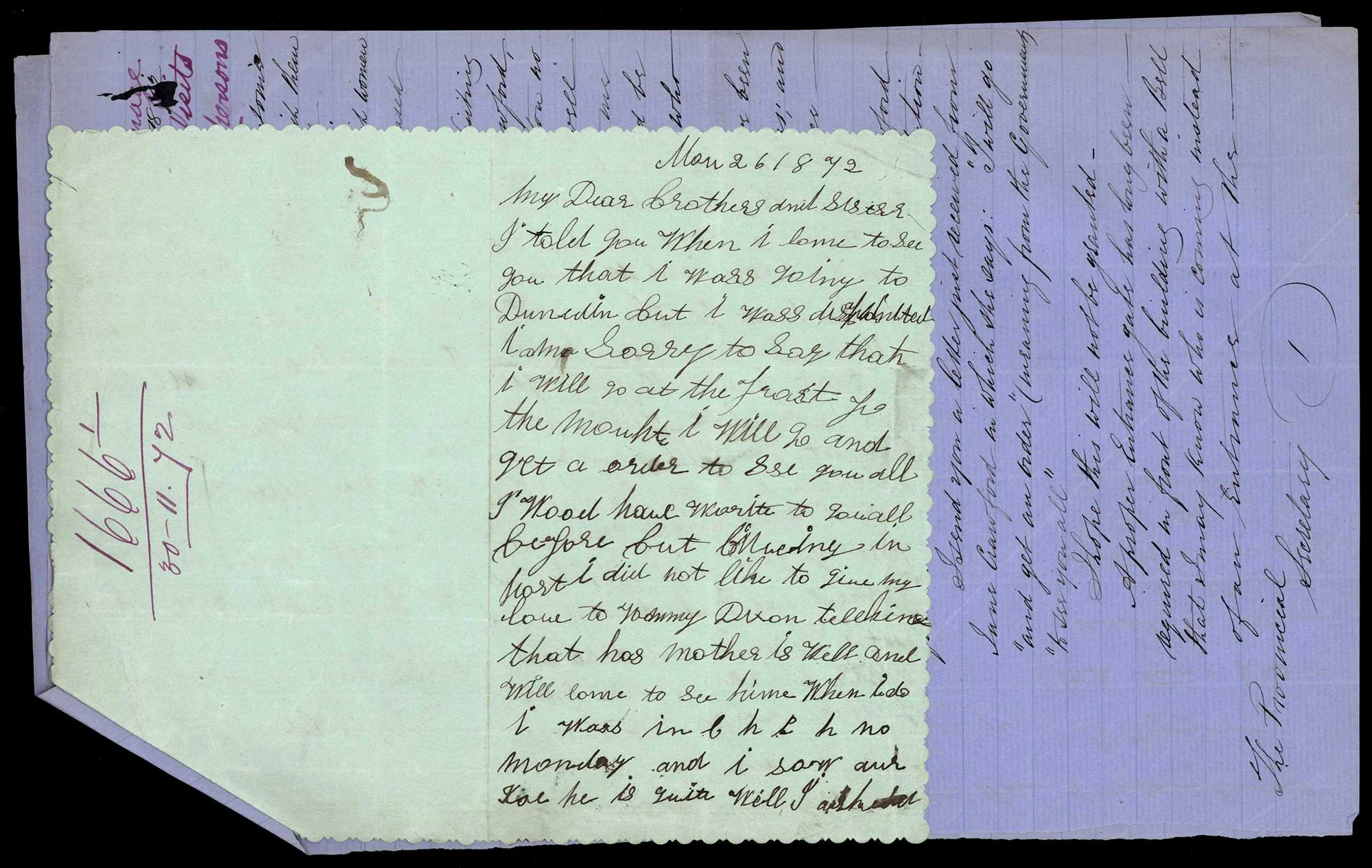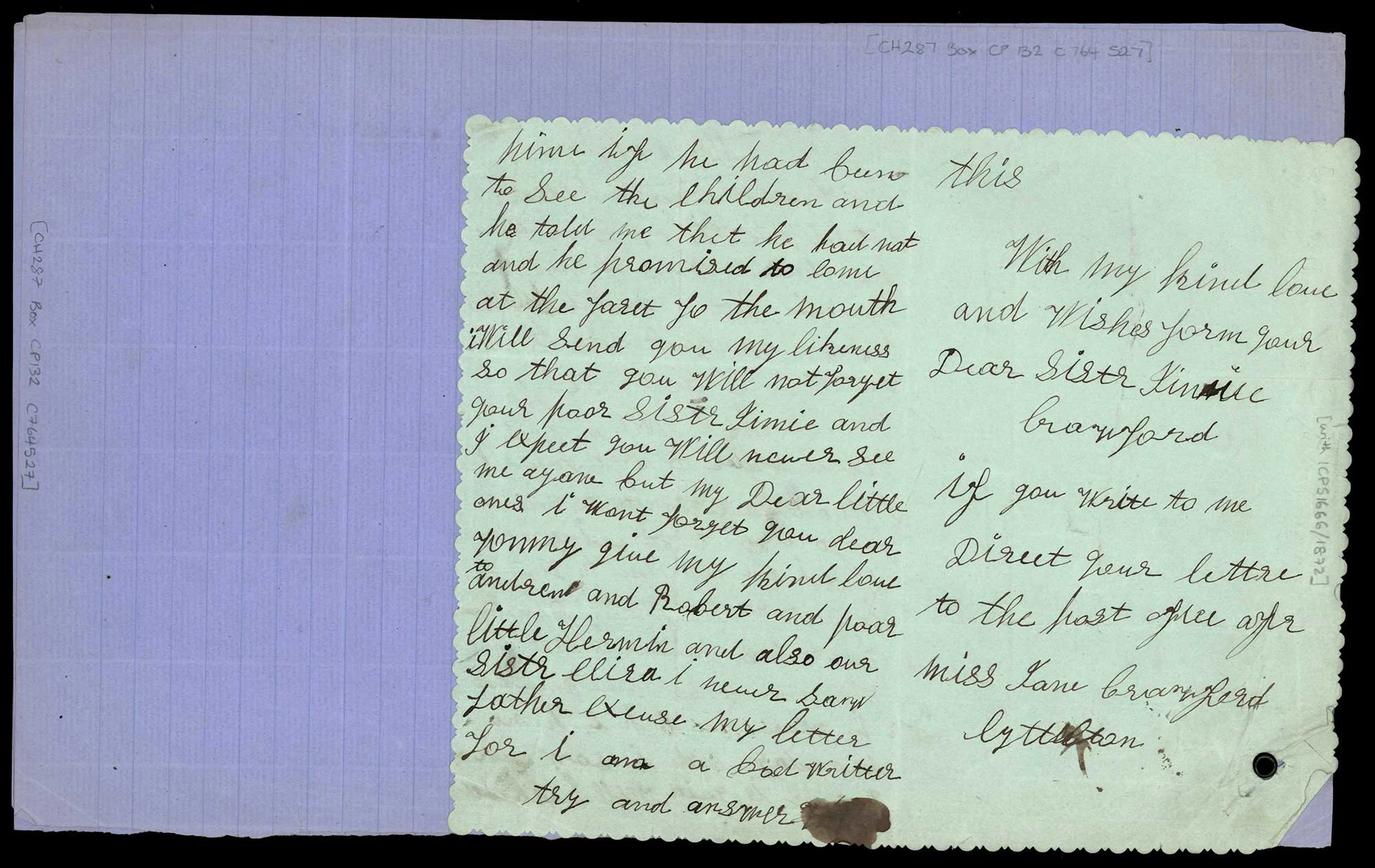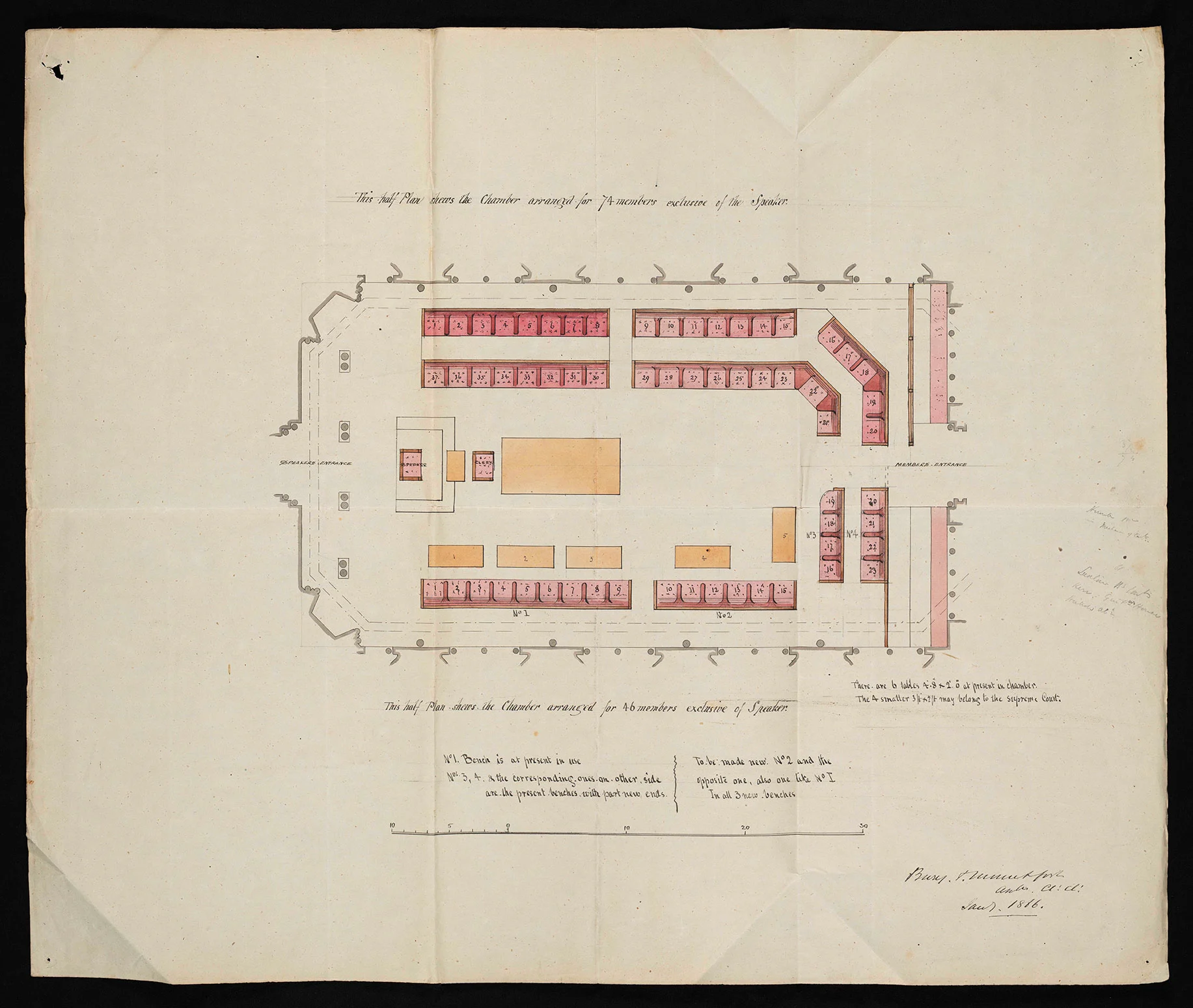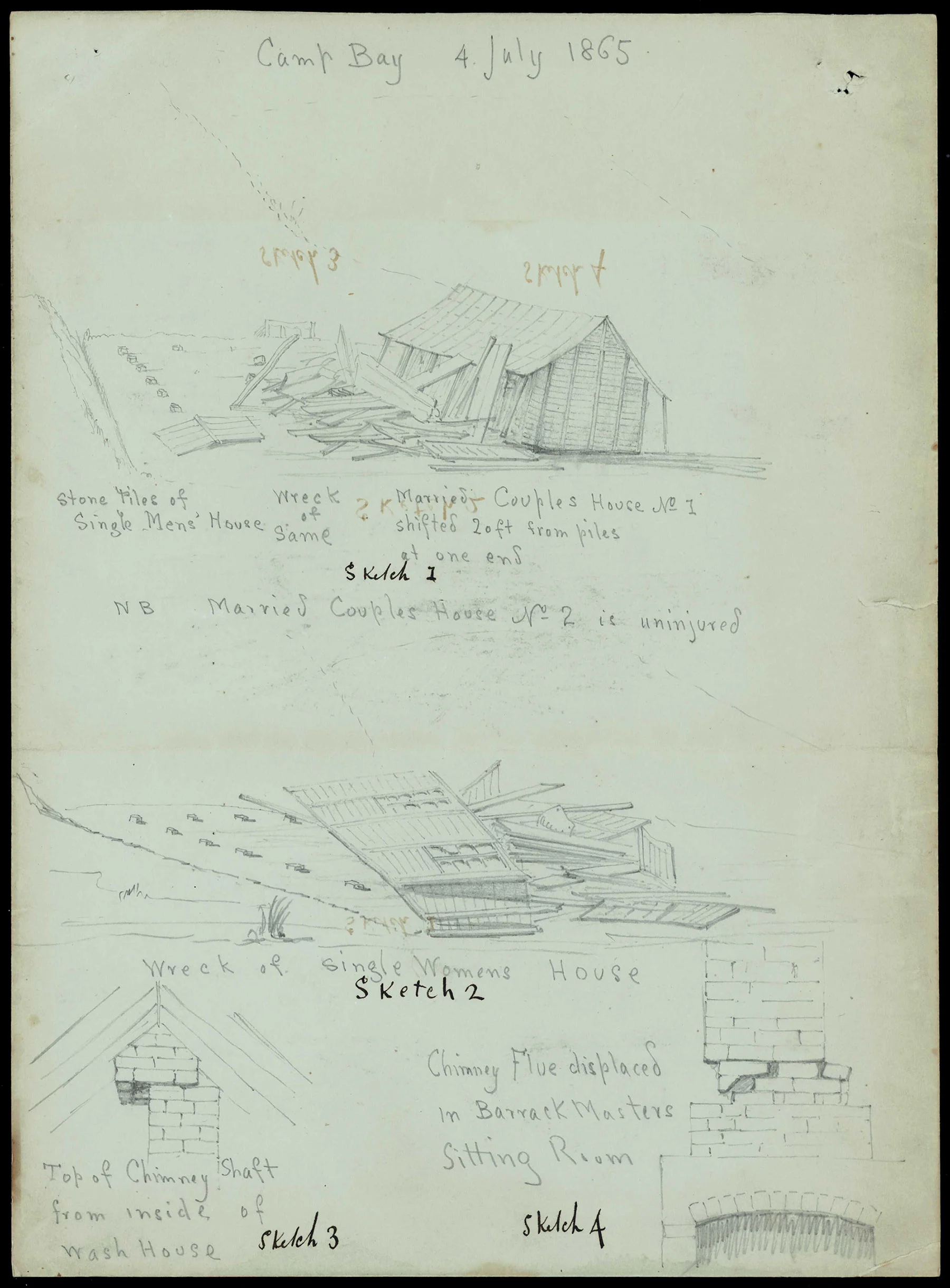
E whakamanahia ana e UNESCO Ngā Pūranga Kāwanatanga Porowini a Waitaha
UNESCO recognises Canterbury Provincial Government Archives
The Canterbury Provincial Government Archives have been inscribed on the Aotearoa New Zealand Register of the Memory of the World. Learn more about the significance of these unique records and view recently digitised items online.
The extensive archives of the Canterbury Provincial Government
The Canterbury Provincial Government Archives, 1853 to 1877, are arguably the largest and most comprehensive provincial government archives that remain. They are an outstanding example of colonial recordkeeping.
In vivid detail, this collection documents 24 years of dynamic change in Canterbury and the West Coast — from the introduction of federal style provincial government throughout the country in 1853, to its abolition between 1875 and 1877. It witnesses the region's rapid colonisation and gives a rich view of settler life at every level — from the political to the personal. These archives are also a testament to the overwhelming impact of colonisation on Ngāi Tahu and their determined engagement with the provincial government.
Additionally, the collection provides a significant record of the West Coast goldrush and its attendant communities. The West Coast was part of Canterbury until 1867 and there is a notable lack of archives for this region.
While doing all this, the Canterbury Provincial Government Archives document in detail the foundation and growth of Ōtautahi Christchurch — New Zealand’s second largest city.
Accessible records valued by researchers
The Canterbury Provincial Government Archives are a rich resource for research, documenting the provincial government's administration in many areas such as immigration, public works (including railways), education and social welfare.
We can hear a wide range of voices within them — from semi-literate domestic servants to aspiring merchants and the landed gentry. Documents and letters in te reo Māori provide unique insight into the interaction between tangata whenua and the provincial government, including detailed census records for several Ngāi Tahu villages such as Akaroa, Kaiapoi and Wairewa (Little River).
The Canterbury Provincial Government Archives were also comparatively well-described by the mid-20th century. This made them the most accessible and widely used provincial archives. They’re valued by a range of researchers — from academics to writers to family history enthusiasts.
View the Canterbury Provincial Government Archives online
The Canterbury Provincial Government Archives are held in our Christchurch office, but we have recently digitised 3 large series. You can now view these online.
We hope to digitise further series in time. This very large collection — consisting of roughly 35,000 discrete items — is also well listed at item level on Collections search.
Records from the Canterbury Provincial Government Archives
Electric Telegraph Office, Lyttelton
-
![Architect's drawings of a house with black outlines and filled with yellow and orange colour.]() Click to expandDrawings of Electric Telegraph Office, Lyttelton (1865)CAAR 19946 ICPW 802/1865 R21083672
Click to expandDrawings of Electric Telegraph Office, Lyttelton (1865)CAAR 19946 ICPW 802/1865 R21083672![Architect's drawings of a house with black outlines and filled with yellow and orange colour.]() Click to expandDrawings of Electric Telegraph Office, Lyttelton (1865)CAAR 19946 ICPW 802/1865 R21083672
Click to expandDrawings of Electric Telegraph Office, Lyttelton (1865)CAAR 19946 ICPW 802/1865 R21083672
The Canterbury Provincial Government set up an electric telegraph line between Lyttelton and Christchurch in 1862 — the first in New Zealand.
This important innovation dramatically increased the speed of communication and from this point onwards we see an increasing number of telegrams within the inwards correspondence of provincial officials — particularly from the general government in Wellington.
This plan of the Electric Telegraph Office in Lyttelton shows a sleeping room was included for the telegraphy clerks, one of whom was expected to stay overnight.
Dobson's map — a new route to the West Coast
-
![An old map on a brown paper torn in some places]() Click to expandDobson map: a new route to the West CoastCAAR 19936 ICPS 1073/1864 R22195883
Click to expandDobson map: a new route to the West CoastCAAR 19936 ICPS 1073/1864 R22195883![An old map on a brown paper torn in some places]() Click to expandDobson map: a new route to the West CoastCAAR 19936 ICPS 1073/1864 R22195883
Click to expandDobson map: a new route to the West CoastCAAR 19936 ICPS 1073/1864 R22195883
In 1864 Arthur Dobson, a surveyor for the Canterbury Provincial Government, made a breakthrough in the search for a viable route from Canterbury to the West Coast. This had been a particular focus, as until then, the only route had required an arduous journey through the Hurunui Saddle.
The discovery of gold on the West Coast meant the swiftly growing diggings needed provisioning and Canterbury was already losing this lucrative trade to ships dispatched from Melbourne. Dobson’s watercolour map shows the entire new route — from the Waimakariri River to the Arahura River — via the steep mountain terrain now known as Arthur’s Pass.
Ihaia Tainui in Taramakau
-
![Handwritten text with black ink on an old paper]() Click to expandLetter from Ihaia Tainui in TaramakauCAAR 19936 ICPS 570A/1873 R22192744
Click to expandLetter from Ihaia Tainui in TaramakauCAAR 19936 ICPS 570A/1873 R22192744![Handwritten text with black ink on an old paper]() Click to expandLetter from Ihaia Tainui in TaramakauCAAR 19936 ICPS 570A/1873 R22192744
Click to expandLetter from Ihaia Tainui in TaramakauCAAR 19936 ICPS 570A/1873 R22192744 -
![Handwritten text on an old yellowed paper]() Click to expandLetter from Ihaia Tainui in TaramakauCAAR 19936 ICPS 570A/1873 R22192744
Click to expandLetter from Ihaia Tainui in TaramakauCAAR 19936 ICPS 570A/1873 R22192744![Handwritten text on an old yellowed paper]() Click to expandLetter from Ihaia Tainui in TaramakauCAAR 19936 ICPS 570A/1873 R22192744
Click to expandLetter from Ihaia Tainui in TaramakauCAAR 19936 ICPS 570A/1873 R22192744
There are several examples of letters in te reo Māori in the Canterbury Provincial Government archives, which give us a direct insight into the experience of the tangata whenua as the settlement grew. Ihaia Tainui was noted for the discovery of gold at Hononu (Greenstone River) on the West Coast, and here he comments to the Provincial Secretary that there is ‘plenty of gold… but the place is not suitable for pākeha as there is too much water’.
James Stack was a priest at the Māori Mission at Tuahiwi and also an interpreter for the Provincial Government.
Constructing the settlement
-
![Map with black lines and some text on the left, on an old paper]() Click to expandConstructing the settlementCAAR 20410 CP594/d22 R26299938
Click to expandConstructing the settlementCAAR 20410 CP594/d22 R26299938![Map with black lines and some text on the left, on an old paper]() Click to expandConstructing the settlementCAAR 20410 CP594/d22 R26299938
Click to expandConstructing the settlementCAAR 20410 CP594/d22 R26299938 -
![Pencil sketch on an old paper with dense trees in the center, houses on the left and mountains seen on the right]() Click to expandConstructing the settlementCAAR 20410 CP594/d22 R26299938
Click to expandConstructing the settlementCAAR 20410 CP594/d22 R26299938![Pencil sketch on an old paper with dense trees in the center, houses on the left and mountains seen on the right]() Click to expandConstructing the settlementCAAR 20410 CP594/d22 R26299938
Click to expandConstructing the settlementCAAR 20410 CP594/d22 R26299938
These beautifully detailed sketches form part of a lengthy report to the Canterbury Provincial Council from the Provincial Engineer, Edward Dobson, in 1858. Reporting on the state of Public Works in the still young settlement, he describes the progress made and sets out plans for the future regarding townships, roads, water, drainage and sewerage infrastructure.
He proposes a new township on the Halswell River ‘in the middle of a very fine tract of agricultural land’. He also submits a design for a town belt for Christchurch ‘so as to form an ornament to the town and an attractive promenade’.
A letter to Lyttelton Orphanage
-
![Handwritten letters with cursive script on old pale green and blue papers]() Click to expandPage 1 of a letter to Lyttelton OrphanageCAAR 19936 ICPS 1666/1872 R22679759
Click to expandPage 1 of a letter to Lyttelton OrphanageCAAR 19936 ICPS 1666/1872 R22679759![Handwritten letters with cursive script on old pale green and blue papers]() Click to expandPage 1 of a letter to Lyttelton OrphanageCAAR 19936 ICPS 1666/1872 R22679759
Click to expandPage 1 of a letter to Lyttelton OrphanageCAAR 19936 ICPS 1666/1872 R22679759 -
![Handwritten letter on an old pale green paper]() Click to expandPage 2 of a letter to Lyttelton OrphanageCAAR 19936 ICPS 1666/1872 R22679759
Click to expandPage 2 of a letter to Lyttelton OrphanageCAAR 19936 ICPS 1666/1872 R22679759![Handwritten letter on an old pale green paper]() Click to expandPage 2 of a letter to Lyttelton OrphanageCAAR 19936 ICPS 1666/1872 R22679759
Click to expandPage 2 of a letter to Lyttelton OrphanageCAAR 19936 ICPS 1666/1872 R22679759
This heartbreaking letter was sent by Jane (Jinnie) Crawford to her 5 siblings in the Lyttelton Orphanage in 1872. It’s possible the 5 children didn’t ever see their sister’s letter as it was forwarded to the Provincial Government by the Master of the Orphanage, Edward Giraud.
He wanted to know if he was obliged to allow ‘women that lead a life of prostitution’ to visit their relatives in the Orphanage. Writing phonetically, Jinnie farewells her siblings sadly and says, ‘I will send you my likeness so you will not forget your poor sister’.
Canterbury Provincial Council's chamber seating plan
-
![An old map using black and red colours on an old paper]() Click to expandCanterbury Provincial Council Chamber seating planCAAR 19946 ICPW 1903/1867 R8417789
Click to expandCanterbury Provincial Council Chamber seating planCAAR 19946 ICPW 1903/1867 R8417789![An old map using black and red colours on an old paper]() Click to expandCanterbury Provincial Council Chamber seating planCAAR 19946 ICPW 1903/1867 R8417789
Click to expandCanterbury Provincial Council Chamber seating planCAAR 19946 ICPW 1903/1867 R8417789
This seating plan for the Canterbury Provincial Council’s legislative chamber is part of a large file on the design and construction of this beautiful Gothic Revival building. The stone chamber and its adjacent timber buildings were architect Benjamin Mountfort’s masterpiece and are the only provincial government buildings remaining in New Zealand.
The buildings were badly damaged in the 2011 Christchurch earthquakes, when Christchurch lost much of its built heritage, and plans for their restoration are underway.
Storm damaged Camp Bay quarantine barracks
-
![Group of sketches showing a damaged house on an old paper and some text written in pencil]() Click to expandStorm damaged Camp Bay Quarantine Barracks -1865CAAR 19946 ICPW 705/1870 R8418486
Click to expandStorm damaged Camp Bay Quarantine Barracks -1865CAAR 19946 ICPW 705/1870 R8418486![Group of sketches showing a damaged house on an old paper and some text written in pencil]() Click to expandStorm damaged Camp Bay Quarantine Barracks -1865CAAR 19946 ICPW 705/1870 R8418486
Click to expandStorm damaged Camp Bay Quarantine Barracks -1865CAAR 19946 ICPW 705/1870 R8418486
Some of the many immigrant ships arriving in Lyttelton had contagious diseases on board, such as scarlet fever, so the Provincial Government set up quarantine barracks to prevent the spread. One such barracks at Camp Bay in Lyttelton Harbour suffered storm damage on one night in June 1865, destroying 2 of the buildings completely.
The Secretary for Public Works sent men to inspect the damage and these sketches were made. Camp Bay was clearly a very windswept and inhospitable place as this sketch is from a large file containing many reports of damage from gales and rainstorms during the 1860s.
The UNESCO Memory of the World Aotearoa New Zealand
Established in 2010, the UNESCO Memory of the World Aotearoa New Zealand programme recognises significant items of documentary heritage and promotes their accessibility, preservation and protection. It is one of over 60 Memory of the World programmes worldwide.
Read more about the UNESCO Memory of the World Aotearoa New Zealand programme
